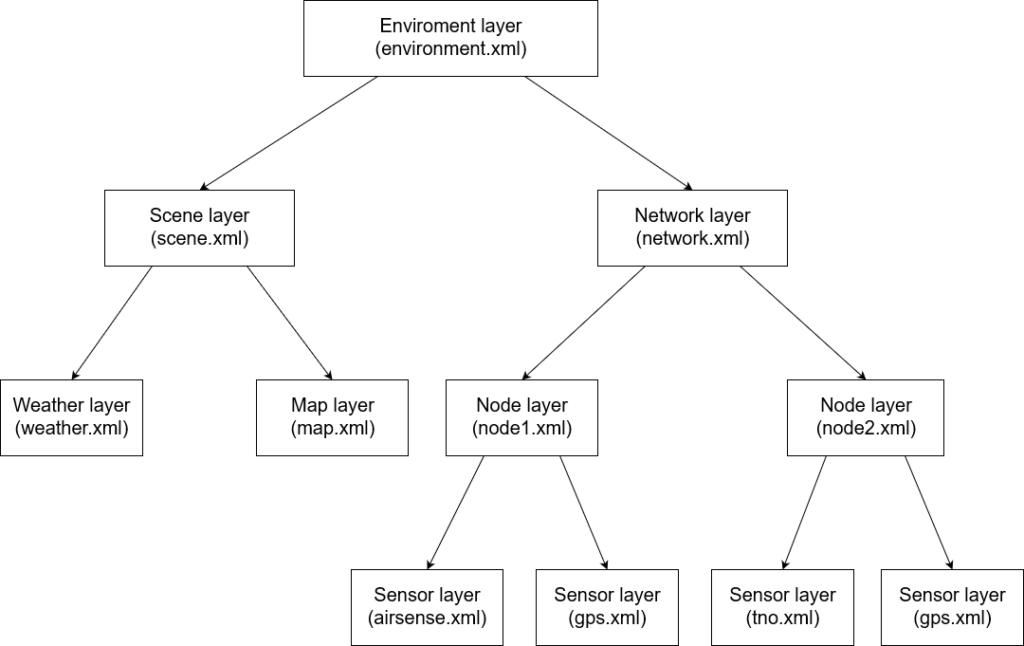EU-SENSE system, in its design, utilizes a system of systems concept. One of many challenges related to such an approach is a difference in data schemas, formats and models in the components (especially, this is a challenge in third-party devices such as AP4C and MO detectors, where the data format cannot be modified/changed).
One of the core EU-SENSE assumptions is to ensure the developed sensor mode interoperability, which means that the node can be configured with any of the supported sensors and can be freely adapted to various sets of sensors (up to the hardware interface limit). For example, the node will be functional with a single GDA detector or a single AP4C detector or both sensors at the same time. The supporting system will be able to use the node in every configuration (in some cases limiting functionalities of data fusion).
Such interoperability is achieved by a dedicated EU-SENSE data model. The data model itself is based on two elements. The first is a network configuration standard, which is implemented as a set of XML files meant to be shared among the system components. That ensures that every EU-SENSE component knows, which sensor is connected to the network and what kind of data is available. The standard is based on a hierarchical structure, which reduces the information redundancy. The XML files are divided based on the abstraction level of the description (inter alia, network, node, and sensor levels are included). The following diagram presents the structure of XML files.

The second element of the EU-SENSE data model is a set of files describing communication between the system components. These include mainly protobuf messages description files (see https://developers.google.com/protocol-buffers/ for additional reference). Some of the messages, especially those describing sensor data frames, are based on the XML configuration files and can be generated automatically, enabling developers easy adaptation of the system to the potential new sensors.
In conclusion, the EU-SENSE system utilizes a dedicated data model, which facilitates the system’s interoperability and provides a convenient solution for developers to extend, adapt and reconfigure the system components.
